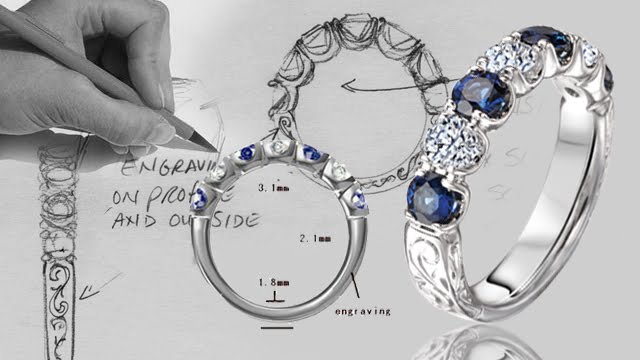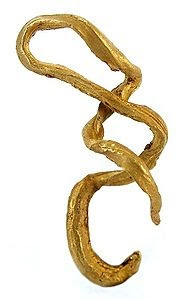It is a common myth that says a rising gold price would be followed by economic doom, misery, hard times, and perhaps a dreaded depression.
Nothing could be further from the truth. Rising gold and silver prices helps the economy, as I will prove.
The reason this myth is created in the media is to scare people away from investing in gold and silver. The myth creates a sense of guilt among those who own gold, and among those who are thinking about buying gold. It wrongly claims, "You will be to blame for harming the economy, if you buy gold and the gold price goes up." It whispers the socialist lie, "If we all remain in the dollar, everything will be OK."
The amazing thing about this media-myth is how many gold investors are scared out of their minds of the thought of gold rising past $3000/oz. as they fear it will bring on the prophesied economic doom, with riots, joblessness, homelessness, and widespread poverty.
Here is the reality from history. In 1933 U.S. farmers were dumping milk and destroying their crops because prices were artificially kept so low that they were losing money. Why were prices too low? Because gold was fixed at $20/oz.! And thus, other commodities were also priced too low! It would cost farmers money to bring their produce to market; therefore, they stopped doing so. The farmers were smart enough to realize and act on the axiom, "Do not engage in uneconomical activity."
I wish the silver miners today would be so smart. In other words, if you are not making a profit by mining and selling silver, stop bringing silver to market!
n my opinion Franklin D. Roosevelt was one of the worst presidents in our nation's history. He did more to befriend the big banks, and hurt the interests of the common man, and destroy economic freedom than perhaps any other president. Under FDR we got the dreaded Ponzi-scheme called Social Security. He created bigger government, social handouts, price controls, pulled the nation into World War II, and did everything needed to lead to the totalitarian government we have today.
But there was one thing he did that I think that had positive benefits. He revalued the gold price upwards from $20/oz. to $35/oz. Most gold commentators will say this was theft, a default, and the worst thing he did. But FDR did not create the theft that was originally created when excess paper money was created in the first place. The money-creation was the theft. FDR issued the decree that said that this excessively created paper money should not be valued as highly as it claimed it should be. That was the good thing FDR did, since he helped to reveal the fraud inherent in the dollar. Unfortunately, this re-valuation in the price was accompanied by the proclamation that made it illegal to own gold domestically. Yet, it still helped things for FDR to reveal the fraud of the dollar.
This created a boom in all commodity prices, and helped the farmers out tremendously, and helped the economy. Finally, it would be economic to produce food again. The rising gold price helped the economy.
If anything, the gold price did not rise high enough.
Move forward to the 1970's and 1980's. The years of Ronald Reagan, 1980 to 1988 were prosperous years. Society embraced morality more strongly than in the swinging 70's. Disco was out, and polo shirts were in. Reagan got re-elected in 1984 by asking the simple question, "Are you better off now than you were four years ago?" Prosperity followed after the gold price rose to $850 in 1980. It was not chaos, not doom, not poverty everywhere you looked. It was a boom time. The after effect of the rise in the gold price was prosperity.
So, as if the facts from history are not enough, let's look at the logical, rational reasons why higher precious metal prices will help the economy. It's very simple.
Barter is inefficient. You cannot efficiently trade cookies for a TV set, and you cannot efficiently trade a car for crayons, you cannot efficiently trade chickens for clothes. I hope I'm not boring you to tears, but do you get the concept? You cannot have an efficient economy without real money. You need a medium of exchange that is easily divisible, portable, valuable, and does not spoil or go out of style.
Gold and silver are what you need, for the reason that they make trade easier and more efficient, or economical. Gold and silver thus save time and energy, and are extremely useful.
Furthermore, a gold or silver coin cannot be tracked, does not need to be kept in a bank, does not need to pay interest, and therefore, cannot be taxed on every transaction. Therefore, gold and silver are very efficient for trading, far more efficient and useful than paper money.
(The reason that gold and silver do not need to pay interest is that there is a constant deflation when gold and silver are used as money. They grow ever more valuable over time as production grows more efficient and prosperity increase when gold and silver are used as money. This fact utterly refutes the "time value" of money that states that money today is more useful than money tomorrow, which is a lie used to justify charging interest on a loan. A no-interest gold loan, when gold is used as money, is generally repaid with gold and silver that is more valuable than before!)
In contrast to the usefulness of gold and silver as money: If I'm paid in paper money, drawn from a bank, the other party feels a compulsive need to report to the government how much he paid me, in order to keep his paper trail of transactions open for the government to follow. Thus, each transaction is looked at by the government, and is taxed at every step. This taxation harms and discourages economic activity from taking place, and thus is not an efficient process at all, and reduces trade and the exchange of dollars, and hurts the economy.
Furthermore, as paper money always suffers from inflation or hyperinflation, there is a lack of incentive to save and invest, which also hurts future production, and hurts the economy.
Next, the excessive creation of paper money and overvaluation of that paper money creates economic mis-allocations of capital, and dislocations of economic activity. Jobs are lost as workers overseas produce more for less. People over-invest in housing due to the easy money available for home loans.
Price fixing, (especially in the form of a low gold price, or a manipulated low gold price), in all its forms, hurts the economy. Price fixing is a disruption of free market capitalism. Free market capitalism, and free market prices, create the most prosperity for the most participants far more than any other economic system yet invented by man.
When the price of gold is allowed to seek its natural free market level, and when the fraud of paper money is destroyed (and paper debts wiped out), then economic freedom and prosperity will follow. It will be too expensive to wage needless wars, too expensive for a massive totalitarian government, too expensive for social programs that destroy a person's incentive to work.
When gold and silver are used as money, there will be plenty of people available to work, needing to work, and willing to work. There will be plenty of money (since the gold and silver would then be valuable enough to do the work of money). There will be plenty produced, since the economy will be free from debt, free from over-burdensome government regulations, free from excessive taxation. There will be plenty produced and prosperity will follow because gold and silver are more efficient at promoting trade than the fraud of the dollar that is over-valued and excessively-taxed.
Some people will counter with the lie that certainly paper money is lighter, and thus more efficient. Again, not true. I have a 1/10 oz. gold coin that is very light and small, lighter than a stack of $1 bills. I have a 1 oz. gold coin that is lighter and more compact than four stacks of a 100 count, $1 bills. Besides, our coins have become dross, worthless heavy slugs.
I'd rather have a tenth oz. gold coin in my wallet than two twenty-dollar bills. And I'd rather have an oz. of gold than four hundreds. Who really needs to carry around more than an ounce of gold, anyway? (Only for the large and more rare transactions.) Too heavy? Hogwash! Society can pay for the cost to transport bottled water, but transporting gold costs too much? Ridiculous!
Gold and silver are not too heavy to transport. Silver alone may be relatively heavy today, given that it is so undervalued, but when the metal is fairly valued, transportation is not a problem. When an ounce of gold or silver is $100,000/oz., then an oz. of gold or silver will not be "too heavy" to transport. Transportation costs are miniscule to the extreme, and are no justification for the fraud of paper money.
If gold and silver are good for an economy, the parallel point is that fraud is bad for an economy. And since the dollar is fraud, then the dollar is bad for the economy. Yes, it's that simple.
A rising gold price means economic misery for the Federal Reserve, for politicians, for the banks, and for the socialists, and all whom they sponsor, such as the Universities and mass media. A rising gold price means economic freedom and prosperity to everyone else!
Buying gold and silver will bring prosperity not only to you, but also to everyone else! Buying gold and silver is the most useful and economic thing you can do to help bring a positive change to the corruption of society that exists at all levels.
If you would like to learn more about gold and money, please come by and visit goldismoney.com. I also write a free weekly silver stocks report that lists over 80 different silver stocks, and you can sign up to receive it at www.goldismoney.com.
























